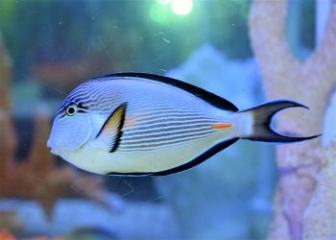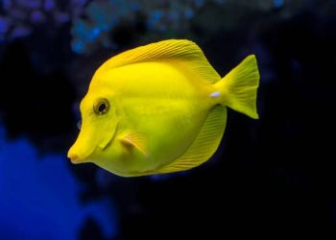Seahorse - Beautiful ornamental fish, valuable in Oriental medicine
Blog | by
Seahorses, a marine creature with an impressive appearance, a horse-like head, an upright swimming posture, and male fish that get pregnant and give birth, are a valuable medicine in Oriental medicine.
Seahorse , scientific name Hippocampus, is a marine creature with a special appearance like a horse's head, upright swimming posture and hard armor covering the body. In addition to being a beautiful ornamental fish, they also play an important role in Oriental medicine with many valuable uses.
In today's article, let's go deep with nice fish to learn all the information related to seahorses to understand them better!
Information about seahorses:
| Scientific name | Hippocampus |
| Common name | Hippocampus |
| Class | Actinopterygii - Ray-finned fishes |
| Set | Syngnathiformes - Pipefish |
| Surname | Syngnathidae |
| Spend | Hippocampus |
| Source | Tropical and temperate seas |
| Size | Average 16 cm, maximum 35 cm |
| Lifespan |
Origin and distribution of seahorses
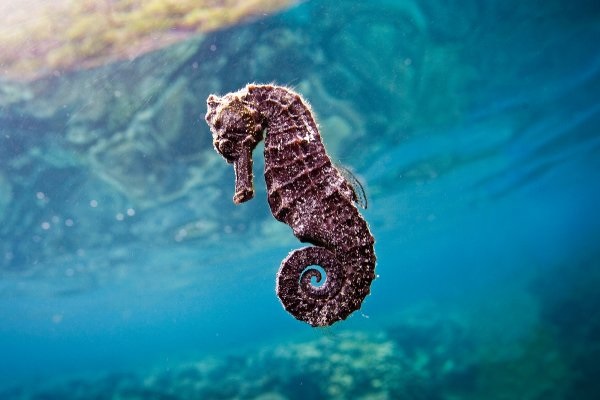
A black seahorse is swimming in the ocean.
Seahorses, also known as hippocampi, scientific name is Hippocampus, a species of marine ornamental fish with a very unique shape, originating and distributed throughout tropical and temperate seas around the world, especially in:
- Western Pacific such as Vietnam, Indonesia, Philippines, Australia,...
- Indian Ocean
- Atlantic
- Mediterranean.
In nature, seahorses often live on shore, where there are coral reefs, seagrass beds or seaweed beds, where the currents are moderate, not too strong.
Currently, in addition to being raised as pets, this fish species is also overexploited to serve the needs of traditional medicine and decoration, so their numbers in the wild are threatened, even some species are listed in the IUCN Red List. And all seahorse species are listed in Appendix II of the CITES Convention - meaning that strong control is needed in international trade.
Impressive appearance of seahorse
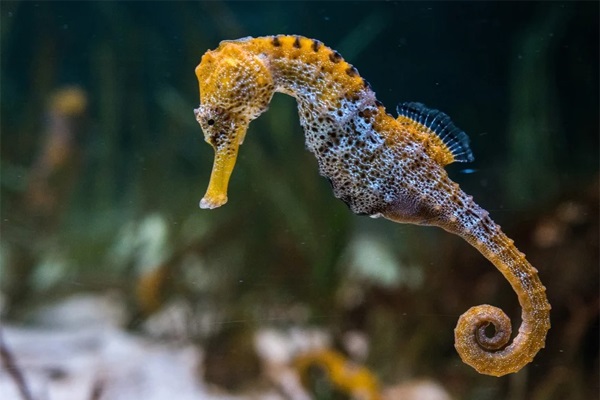
The impressive, unique appearance of a seahorse.
Seahorses are ornamental fish with a very special appearance, very different from other fish species. Let's find out the details below.
- Standing posture : Unlike other fish that swim horizontally, seahorses swim vertically.
- Horse-like head : Long head, pointed snout like a horse's head, for this reason they are also called sea horses.
- Eyes : Located on both sides of the head, can move independently of each other.
- Armored body : They do not have scales like normal fish, instead, the whole body is covered with a hard "armor" arranged in a belt, the body is clearly divided into segments.
- Long, coiled tail : Their tails are curved, flexible, and can be coiled like a spring. They are not used for swimming but help them cling firmly to corals and tree roots.
- Dorsal fin : Small, but beats very fast about 30 - 70 times/second to help the fish move.
- Pectoral fins : Located on both sides of the head, help the fish keep balance.
- Color : Available in many colors such as brown, yellow, orange, blue, stripes, dots, and spots.
- Brood pouch : Male seahorses have a brood pouch on their abdomen.
Seahorse behavior
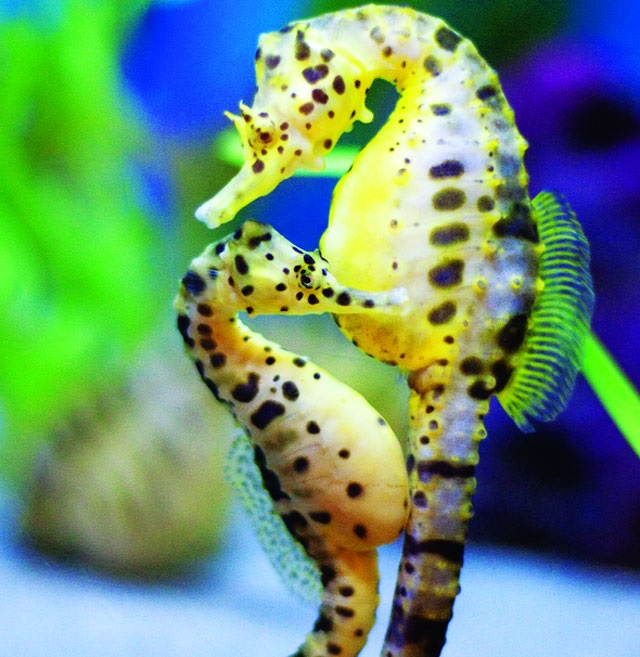
Male seahorses get pregnant and give birth.
Not only does it have a special shape, but seahorses also have many interesting and unusual behaviors compared to other marine aquarium fish. Let's find out here!
Unique reproduction with male fish becoming pregnant
This is perhaps the most unique and impressive behavior compared to other fish species when the male fish takes on the role of pregnancy, specifically as follows:
- Before mating, male and female seahorses will "dance" together, a ritual that shows their bond and mutual agreement. They will change color, entwine their tails, and swim in unison for several minutes to several hours.
- When spawning, the female fish will place eggs in a brood pouch in the male fish's abdomen.
- Eggs are fertilized in the brood pouch, then the male fish will regulate water and oxygen for the eggs to develop.
- Male fish are pregnant for 10 - 25 days, after which the fry are born through contraction of the brood pouch.
- Each time, male fish will give birth to 50 - 2000 offspring depending on the species.
Monogamy
Most seahorses will pair up for life, with the male and female meeting each morning to dance to maintain their bond and reproduce. If one dies, the remaining fish will live alone for a long time, even until it dies.
Live a fixed life, rarely travel far
Because seahorses are poor swimmers and can only move with their small dorsal fins, they are almost unable to swim against the current. Most of their lives, they will choose a fixed place to live and use their tails to curl around seaweed and tree roots to maintain their position.
Color changing - good camouflage
Seahorses have an interesting habit of changing color according to their living environment or to communicate and flirt. Some species also have spines and tentacles on their bodies to help them camouflage well to avoid enemies such as large fish, octopus, etc.
Eat slowly, eat continuously
Seahorses have no stomachs, so they must eat continuously throughout the day to stay alive. An adult can eat up to 3,000 small creatures a day. They hunt by stalking and sucking their prey with their long snouts instead of biting them like normal fish.
Guide to raising seahorses for economic efficiency
.jpg)
A school of seahorses swimming freely.
Seahorses are beautiful and strange looking marine creatures, but they are more difficult to raise than regular aquarium fish. However, if you want to try your hand at this fish, please refer to the detailed instructions shared below!
Choosing the right type of seahorse to keep as a pet
Currently, there are many different types of seahorses, so when you want to raise them as pets or for medicine, choose the easiest and most popular breed to make care easier. Specifically, some of the following species:
- Tigertail seahorse (H. erectus) : The most common and easiest species to keep.
- Dwarf seahorse (H. zosterae) : Second most common species, small and cute in appearance.
- Striped seahorse (H. comes) : Beautiful appearance, body has spines.
- Barbed Seahorse (H. barbouri) : A fish with beautiful, eye-catching colors.
Preparing the seahorse tank
After choosing the right breed of seahorse, you need to design an ideal tank to help this fish adapt well to artificial captivity conditions. Specifically as follows:
- Size : Minimum tank size is 60 liters for 1 - 2 pairs of seahorses. If you keep many species together, the tank should have a capacity of 90 - 120 liters or more.
- Filtration system : Use overflow filter, external filter to keep water stable, with gentle flow.
- Aeration : Required to provide dissolved oxygen to the fish.
- LED lights : Choose the type with soft light.
- Tank decoration : Use dead coral, live rock, soft plastic plants, seaweed substrate or branch substrate for the seahorse to wrap its tail around.
- Temperature : 22 - 26 degrees Celsius
- Salinity : 1.020 - 1.025 SG
- pH : 8.1 - 8.4
What do seahorses eat?
Seahorses are carnivores, when kept in an artificial tank, you can feed them the following foods:
- Live saltwater shrimp -- Artemia
- Copepod, mysid shrimp
- Frozen food has been thawed.
Note:
- Feed fish 3 - 4 times/day because they do not have stomachs.
- A floating feeding ring should be installed to keep food concentrated in one place as this fish is not a good swimmer.
- Should feed at fixed times and amounts.
Which fish should and should not be kept with seahorses?
Seahorses have high requirements for water quality and aquariums, so they can only be kept with the following species:
- Starfish, tube fish, snails.
- Seaweed.
Seahorses should not be kept with:
- Nemo fish , yellow threadfin fish , green threadfin fish , Japanese threadfin fish ,...
- Aggressive fish like lionfish
- Anemone fish are poisonous.
The role of seahorses in Oriental medicine
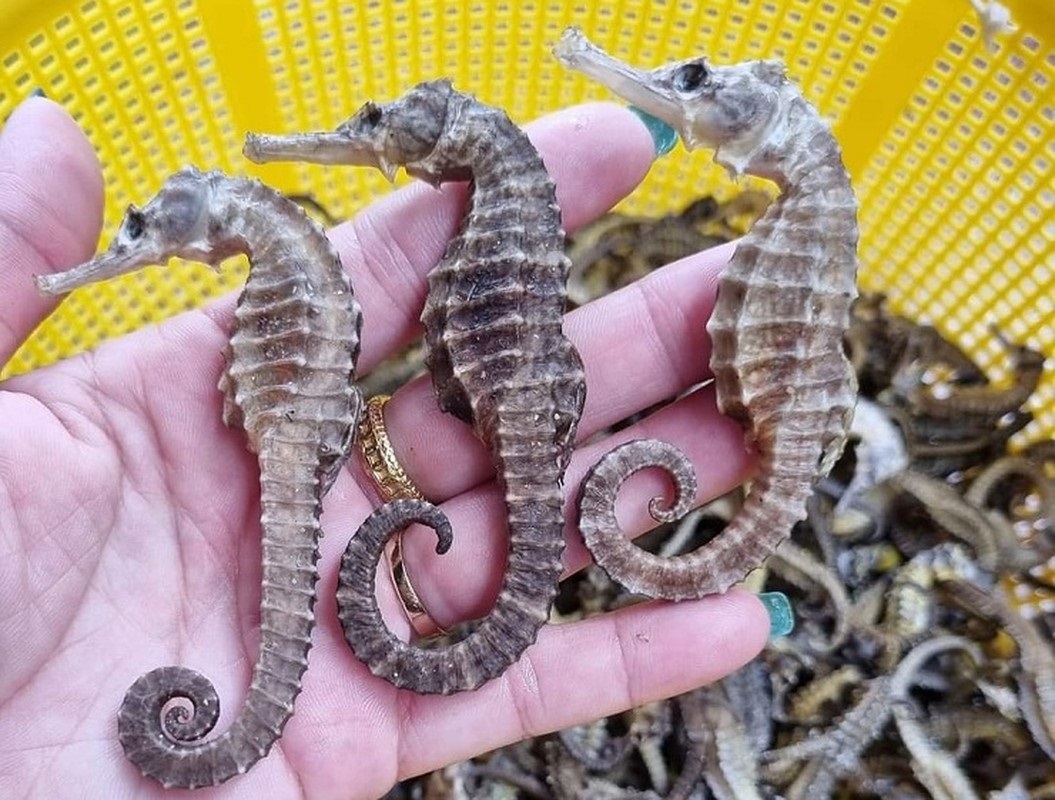
Dried seahorses are used as medicine in oriental medicine.
Nowadays, in addition to being kept as pets, seahorses are also a valuable medicinal herb in oriental medicine, especially in the traditional medicine of China, Vietnam and some other countries in Asia. Their uses are as follows:
- Kidney tonic : Helps enhance male vitality.
- Promotes blood circulation : Helps with blood circulation in some diseases such as joint pain, numbness in limbs,...
- Growth stimulant, infertility treatment : Used to treat infertility in both men and women, helps increase hormones.
- Support for women after giving birth : Replenish blood and energy, increase milk secretion, and restore the body after giving birth.
How to use dried seahorse :
- Used to cook with Chinese medicine.
- Soak in wine
- Powdered drink
- Cook into a thick paste to drink.
Note when using :
- Seahorses are warm in nature, so they should not be used by people with yin deficiency and excess fire because it will cause heat in the body, even constipation.
- Do not abuse, especially overdose on alcohol because it can be counterproductive.
- Pregnant women, nursing mothers, and children should consult a doctor before using this product.
Price list of ornamental seahorses & dried seahorses
Right below, we will share details about the price of ornamental seahorses and dried seahorses, please refer to it now.
Price list of ornamental seahorses :
| Seahorse | Source | Reference price (VND/kg) |
| Tiger-tailed seahorse (H. erectus) | Domestic, imported from Thailand | 300,000 - 550,000 |
| Striped seahorse (H. comes) | Indonesia | 500,000 - 750,000 |
| Spiny seahorse (H. barbouri) | Philippines | 450,000 - 850,000 |
| Dwarf seahorse (H. zosterae) | America | 850,000 - 1,500,000 |
Note : You should choose seahorses that are bred in tanks instead of wild-caught fish so that they can adapt more easily and be easier to care for.
Price list of dried seahorses (medicinal use):
| Dried seahorse | Reference price (VND/kg) |
| Small dried seahorse size 3 - 5 cm | 3,000,000 - 4,500,000 |
| Medium dried seahorse 6 - 8 cm | 5,500,000 - 7,500,000 |
| Large dried seahorse 9 - 12 cm | 8,500,000 - 10,000,000 |
Questions and answers about seahorses?
Are seahorses edible?
Yes, you can roast it and eat it directly or use it as a decoction, powder or soak it in wine to drink.
Do seahorses give birth or lay eggs?
First, the female seahorse will lay eggs in the male's brood pouch, after the gestation period, the male seahorse will give birth to baby fish.
What is the effect of seahorse soaked in wine?
Seahorses soaked in wine can help treat infertility, prevent aging, improve married life,...
Beautiful seahorse pictures
Right below, we have collected many pictures of beautiful and unique seahorses in the natural world, please admire them right away.
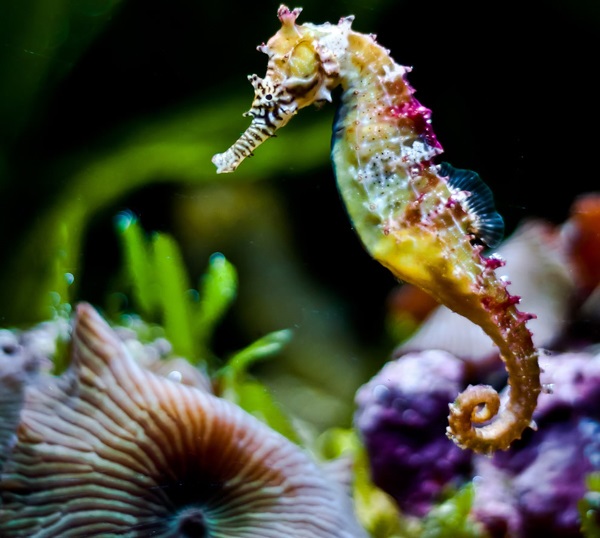
A beautiful seahorse is swimming in the aquarium.
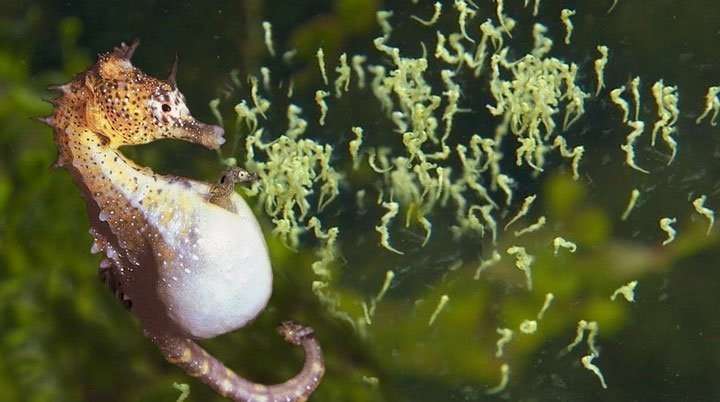
Image of male seahorse giving birth.
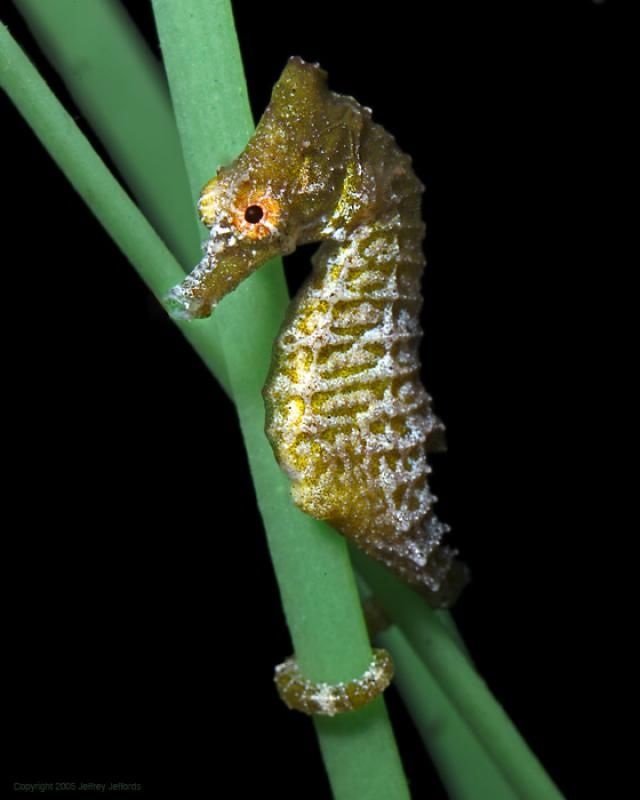
Dwarf seahorse H. zosterae clinging to aquatic plant stem.
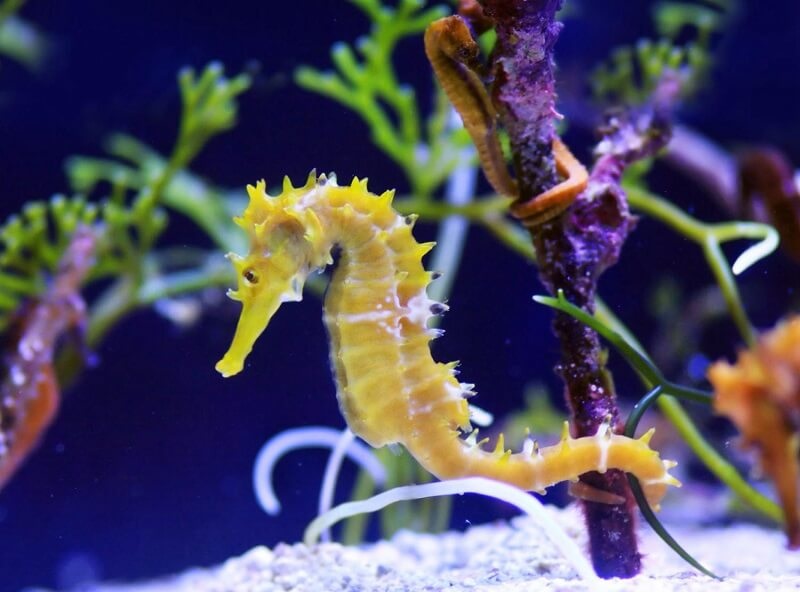
Image of a seahorse with its tail wrapped around a tree trunk.

A seahorse with a unique spotted pattern.
Thus, above, nicefish.net has shared detailed information about seahorses . It can be seen that this is not only a fish species with interesting shape and reproductive habits, but also has many valuable values in the field of Oriental medicine. However, currently due to overexploitation, they are facing the risk of extinction and need to be preserved.
If you want to discover more beautiful and unique aquarium fish and other useful aquatic knowledge, please visit our Blog section now to read more articles!
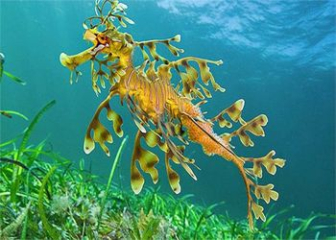
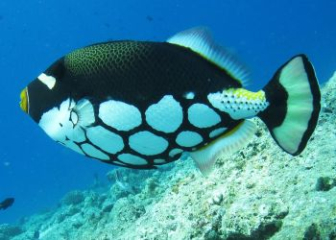
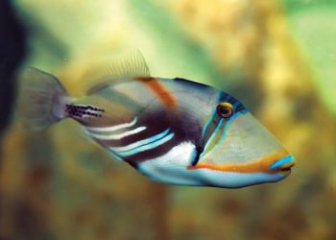
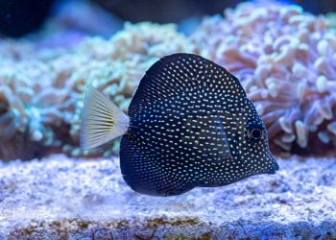
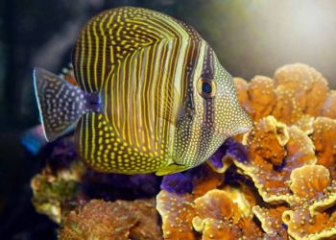
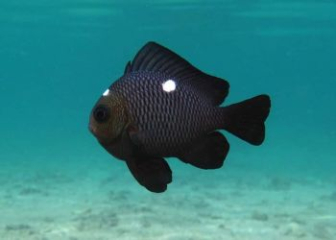






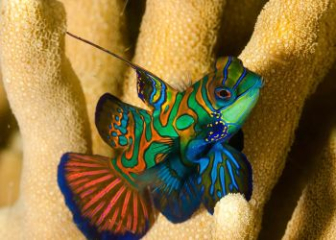

_350x250.jpg)


